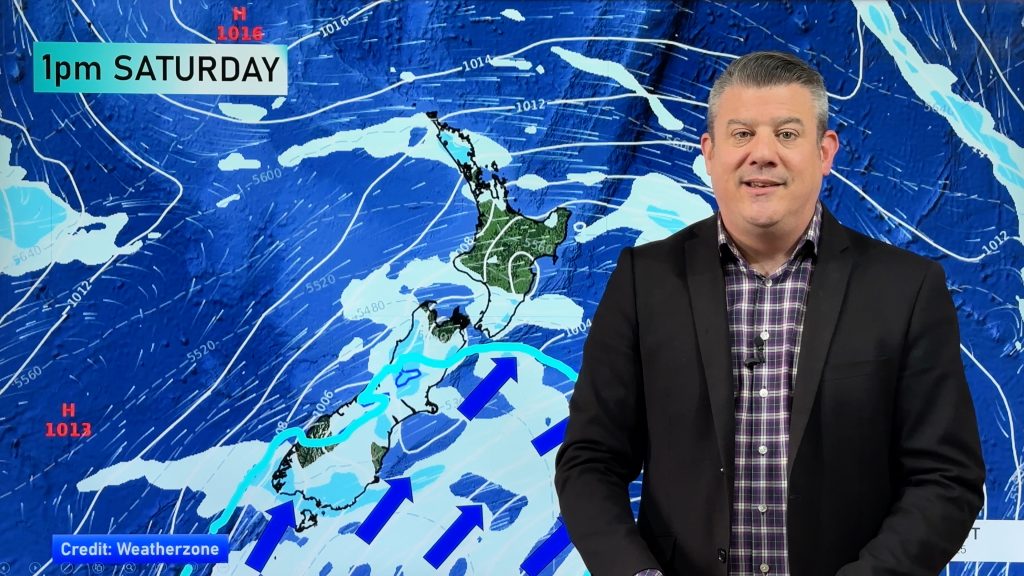Your web browser (Internet Explorer) is out of date. Some things will not look right and things might not work properly. Please download an up-to-date and free browser from here.
8:50pm, 22nd December
Home > News > Weather icons really only tell half the ...
Weather icons really only tell half the forecast story
18/12/2022 9:58pm

> From the WeatherWatch archives
Many forecasts across New Zealand during a La Nina summer can show a rain or thunderstorm symbol/icon – but sunny and dry weather may still dominate some places that expect to have rain or thunder. Why does this happen?
Basically the weather icon displayed in a forecast is to draw attention to what may be considered the main weather feature(s) of the day. 24 hours of weather boiled down into one small picture. Even if a thunderstorm only lasts 15 minutes out of an entire 24 hours, it may be considering the main feature of the day (and this is a constant debate with weather forecasters vs which icon should go up!).
Weather #icons only tell part of the forecast story!
— WeatherWatch.co.nz (@WeatherWatchNZ) December 18, 2022
This week you'll see plenty of 🌧️🌩️weather icons. This is because downpours inland will be big & may track into nearby regions. It's worth noting that around these downpours it may well be ☀️🌤️.
📡Track daily on rain radar! pic.twitter.com/8txPvz2lWG
For many people, the weather icon is most or half of their forecast – but you need to read the “fine print” in the surrounding/supporting weather maps and data to really get the forecast that is most accurate. If this extra accuracy matters to you, or your business, then understanding and following the steps listed out below should help save you some frustration when the forecast doesn’t pan out the way you expected based mostly on that icon.
Thunderstorms can move in with cold fronts – in a burst of activity moving in one direction. They can also form, especially in summer, during the day and not move much.
Afternoon heat thunderstorms form after a calm morning with moisture in the atmosphere – moisture which may appear as drizzle, a brief morning shower, or it may be dry and cloudy, or even clear with morning dew on the grass.
On a calm day, the afternoon heat creates sea breezes which push inland where it is even hotter and that then shifts the atmospheric moisture in to one area, being pushed inland and up into the atmosphere by this warm wind. When sea breezes meet – like traffic at an intersection – we get build ups. This process can then start triggering big clouds, isolated but heavy inland downpours and severe thunderstorms. This weather then usually slowly drifts in one direction with the dominant sea breeze (and sea breezes in our two main islands can come in from all directions and converge/meet up inland somewhere). Sometimes these downpours barely move at all and can dramatically increase rainfall totals from what was forecast and cause flooding.
The size of these downpours and all the moving parts with the various sea breezes means the daily thunderstorm/downpour risk area may be large – even if in reality the storms form in just one part of the region. Hence why you see the thunderstorm risk icon even though many days the more coastal centres (like Auckland and many other of our main centres) may be dry or sunny for most of the day.
HOW TO BETTER WORK OUT SUMMER THUNDERSTORM & AFTERNOON DOWNPOUR RISKS
- Thunderstorm Risk maps show (in colour) which areas have highest risk of thunderstorm. If it’s not red/orange then the risk isn’t so widespread or high.
- Rain forecast maps (NEW thanks to Predictwind.com) allow you to compare two global models side by side (or just look at one) to see where the rain and downpours are most likely and the time it moves through / clears, simply by using the slider to animate it.
- MetService Thunderstorm Outlook generally shows which regions are most at risk and which have lowest or no risk (works well in tandem with the Thunderstorm Risk maps and rain forecast maps above)
- Hourly data (from WeatherWatch.co.nz or RuralWeather.co.nz or our App). This is really good for looking at general risk times later today or in the days ahead. The RuralWeather graphs in particular show risk times for the week ahead at just a glance. (the image used in this news story is a screenshot from RuralWeather.conz).
- ON THE DAY: Best way to track downpours and the biggest downpours most likely to contain thunderstorms and hail is by using the Live Rain Radar (updates every 7.5 minutes).
- Also, our daily weather videos usually explain any risks across the year (please note our videos end this Friday for summer holidays, returning mid-January).
Use all these tools above and you won’t be so surprised by the weather that ends up unfolding – plus it can be quite amazing to watch unfold!
WeatherWatch.co.nz – NZ’s most popular private forecaster & proud to be an IBM business data partner
Comments
Before you add a new comment, take note this story was published on 18 Dec 2022.
Latest Video
Latest Christmas forecast + New Year’s Eve outlook
We have an extended forecast covering the rest of 2025 as a cold change looks set to kick in from…
Related Articles
Latest Christmas forecast + New Year’s Eve outlook
We have an extended forecast covering the rest of 2025 as a cold change looks set to kick in from…
Wintry change for some, windy and warm for others
A cold snap is moving up NZ today and Saturday, before easing Sunday and clearing most places on Monday –…
Another cold blast this weekend + Christmas Day weather
As we’ve been saying for several weeks now, we have a spring-like pattern going through December, but with summer-like temperatures….
Navigation
© 2025 WeatherWatch Services Ltd





Add new comment